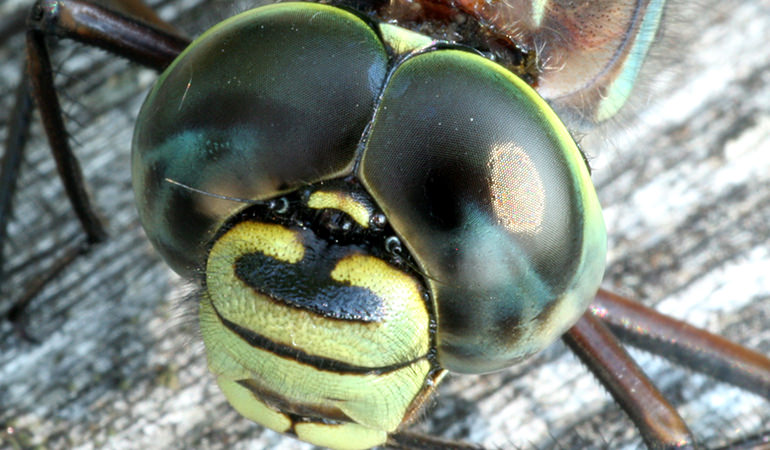We all make predictions. Our days are full of cycles: prediction – experience – review – revise. But while we often experience a measure of short-term success we are often wrong about the bigger things, the longer time frames.
Every part of life drives predictions. We rarely reflect on them in any depth, and we certainly don’t reflect on the mechanisms we use to determine them. It’s just the way life is. Humans are natural story tellers and we find it all too easy to join the dots, creating strings of causal connections that reinforce our current way of thinking.
Most of us are not natural evaluators of facts, and because the causal connections we perceive are rarely accurate, we’re poor predictors. We create stories that conveniently make life look like a consequence of good planning, of superior thinking. The American Philosopher Willard Van Orman Quine says we hold beliefs that are ‘held come what may’. When our success justifies these long-held beliefs, we start building the future on a spurious basis. And we’re all very bad at letting go of our biases.
You would think that more expertise might make us better predictors. Curiously, studies show that non-experts often make better predictions. Have you come across the experiment that pitted Fund Managers’ stock market predictions against those of inexperienced people? It revealed that the non-experts were just as good as the experts at guessing what the future held. And that says it all.

What are the implications for Boards?
Most Boards are made up of ‘experts’. You don’t get a seat at the table without desirable key expertise. Every board member brings a particular skill-set, domain knowledge or functional expertise to the party. Look at the recruitment specifications for Non-Executive Director roles:
- NED with strong experience in decision making and a grasp of public sector issues for a high-performing agency
- NED with globally recognised, top level clinical expertise
- NED with journalism and news industry experience to build new era of trust for new, impartial regulator
- NED with Audit and Risk Assurance expertise to constructively challenge and support statutory governing body
Wanted: expertise to enhance, improve, inform, hold-to-account, advocate, strategise, predict… do you see the pattern?
As the Greek poet Archilochus said, “The fox knows many things but the hedgehog knows one big thing.” Experts are hedgehogs. They know ‘one big thing’. But research suggests the best predictors are not hedgehogs, they’re foxes.

Foxes, hedgehogs and dragonflies
Philip Tetlock and Dan Gardner have written an important book about the nature of prediction, namely Superforecasting: The Art and Science of Prediction (Random House 2016). Philip Tetlock is a professor of management and psychology at Wharton Business School. He has spent over 20 years collecting 27,450 well-defined predictions about ‘clear questions whose answers can later be shown to be indisputably true or false.’ The research, sponsored by the Intelligence Advanced Research Projects Activity (IARPA), was intended to improve US intelligence’s ability to predict world events. Tetlock found that experts performed no better than dart-throwing chimpanzees.
IARPA also spawned the Good Judgement Project, where Tetlock looked for people who seemed better than average at predicting. On studying their characteristics, he discovered that hedgehogs, those who were certain about the one big thing they believed they knew, were worse forecasters, even when they tried to forecast the one big thing they knew about. By contrast foxes, in other words those who knew many little things but were less certain about what they knew, were better predictors.

So… people who make forecasts while remaining mindful about the uncertainty of life do better than those who are not plagued by uncertainty.There’s an excellent summary of the findings here.
Let’s talk about Boards and strategy
Boards waste an awful lot of time focusing on the wrong things. As Bob Garrett, the Institute of Directors’ Strategy Guru, says in his brilliant book on Boards,The Fish Rots from the Head:’Strategy is seeing – seeing ahead, seeing behind, seeing above, seeing below, seeing beyond, seeing beside, and finally seeing through…’
Boards that want to be strategic, boards who want to keep the focus on the most important, most strategic matters, would all do well to consider the value of fox-like perspectives. That said, Philip Tetlock has some wisdom to bring to the task of ‘doing strategy’ in Superforecasting: The Art and Science of Prediction. He says that ‘Superforecasting isn’t a paint-by-numbers method but superforecasters often tackle questions in a roughly similar way — one that any of us can follow‘. Here’s what he recommends.
- Unpack the question into components
- Distinguish as sharply as you can between the known and unknown, leaving no assumption unscrutinised.
- Adopt an outside view and put the problem into a comparative perspective that downplays its uniqueness and treats it as a special case of a wider class of phenomena.
- Then adopt the inside view that plays up the uniqueness of the problem.
- Also explore the similarities and differences between your views and those of others—and pay special attention to prediction markets and other methods of extracting wisdom from crowds.
- Synthesize all these different views into a single vision as acute as that of a dragonfly.
- Finally, express your judgment as precisely as you can, using a finely grained scale of probability.’

If strategy means ‘seeing – seeing ahead, seeing behind, seeing above, seeing below, seeing beyond, seeing beside, and finally seeing through’, and if Tetlock is right that it has to be synthesised ‘into a single vision as acute as that of a dragonfly’, then the role of the Chair is to forge the thinking of every ‘hedgehog’ on the Board, and every, rare fox into something even rarer a ‘single vision as acute as that of a dragonfly.’
Hedgehog or fox the role of the Chair is crucial to that super-acuity.
We’ll help you become more strategic
If you are interested in how your Board or senior team can become more strategic, please get in touch. You’ll be amazed at what you can achieve once you understand how the best predictors operate.
About us:
We create the space for leaders to step back, think clearly, and navigate complexity with confidence. By sharpening the narrative that drives decisions, teams, and performance, we help leaders move forward with clarity and impact. Our approach blends deep listening, incisive challenge, and commercial focus—strengthening leadership at every level, from business transformation to boardroom decisions.
“We share resources that help coaches deepen their practice and expand their impact. The articles on this site are designed to spark fresh thinking, offer practical tools, and support the continuous growth of coaches at every stage. “
Jude Elliman
Founder
Our Core Approach:
We work with leaders to sharpen their thinking, strengthen their leadership, and navigate complexity with confidence. Our approach is built around three core areas:
Narrative Coaching – Working with the stories that shape leadership, teams, and organisations.
Commercial Focus – Cutting through complexity to drive clear, strategic decisions.
Challenge & Space – Asking the right questions while creating the space to reflect and grow.
Through this, we help leaders drive transformation, align teams, and make high-stakes decisions with clarity and impact.
